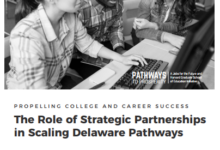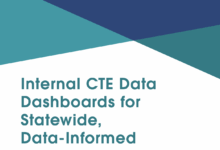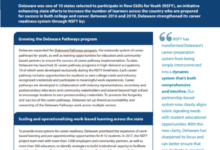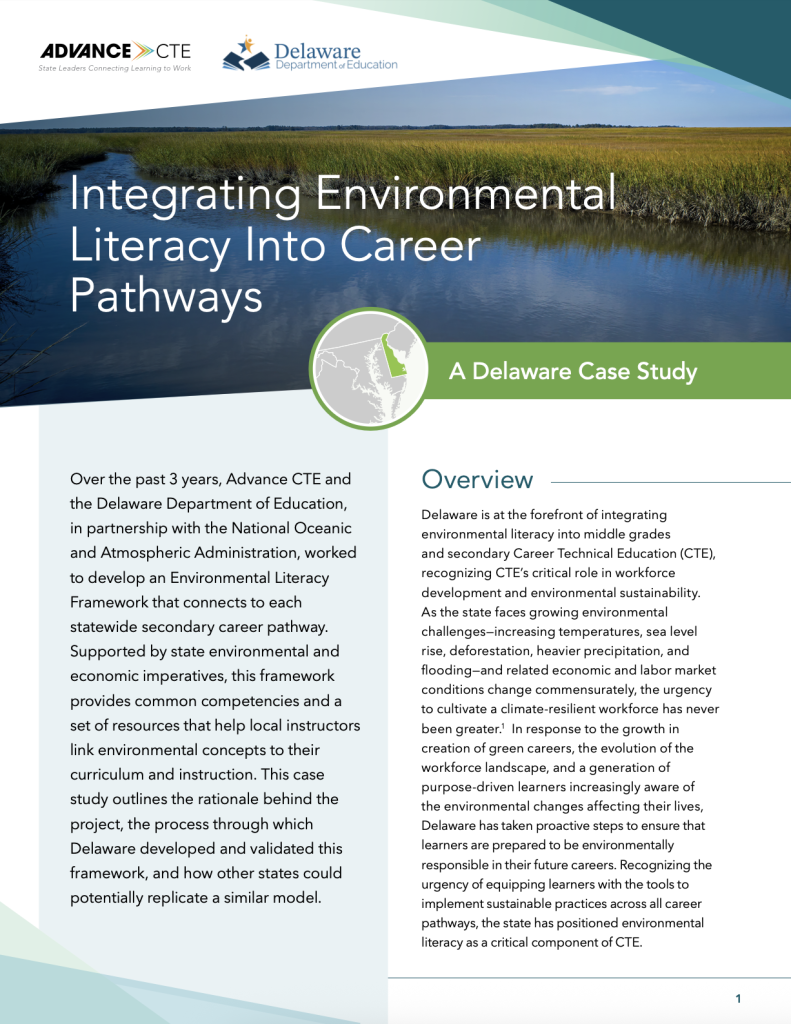Additional Resource: This project is accompanied by a poster for use by DDOE, Delaware guidance counselors, teachers, and other school administrators to emphasize the integration of environmental literacy across different career fields. PNG, Printable PDF
Responding to emerging careers and evolving skill needs within a state or region may involve developing new Career Technical Education (CTE) programs, revisiting existing programs, or engaging learners to think ahead and relate career preparation today to future needs.
Responsiveness requires timely action to ensure that a learner’s experience in high-quality training reflects the world of work and the values that younger generations want to see reflected in their career decision-making. This may involve embedding new skill-building and connected experiences into existing CTE and career pathways programs.
The case study highlights Delaware’s work in integrating environmental literacy standards into career pathways. In doing so, it provides a process and model for other state education and workforce leaders across the country to consider how to incorporate emerging skill areas into CTE programs of study that are regionally relevant for industry needs and learner values.
This resource provides insights into:
- Developing environmental literacy competencies
- Reflection questions for framing the possibility of integrating environmental literacy
- Five lessons learned with critical takeaways to support embedding content
- Processes for development and implementation – early, intermediate, and advanced
- Next steps for the future of environmental literacy in CTE
By using Delaware as an example, Advance CTE developed this case study for other states on how they can create an environmental literacy framework and consider how it could fit within existing frameworks, such as the Career Clusters under the modernized National Career Clusters Framework. This resource was developed in conjunction with an environmental literacy framework that is integrated into secondary career pathways, in partnership with the Delaware Department of Education (DDOE) and the National Oceanic and Atmospheric Administration (NOAA).
View the Accessible PDF





